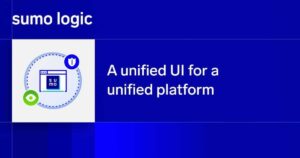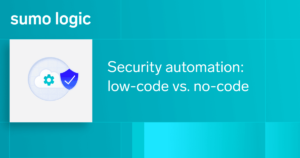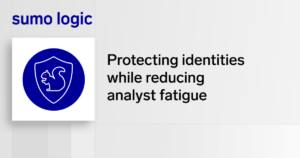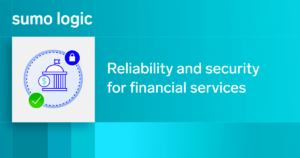Many organizations are slowly shifting towards implementing SOAR technology in their security operations. However, even though the technology is obviously on the rise, some organizations seem to struggle in understanding how SOAR can elevate SecOps in SOCs to empower the efficiency of their cybersecurity posture.
In this blog, we’re going to discuss just that and unravel the bond between SOAR, SOCs, and SecOps in security operations.
What are SOCs and SecOps
SOCs and SecOps are integral components of every cybersecurity system:
-
SOC: SOC stands for Security Operations Center, and almost every organization has to implement SOC to battle cyber attacks. SOC is a combination of people, processes, and technologies that monitor potential cyber-attacks, threats, vulnerabilities and control different aspects of the organization, including threat hunting, incident response, digital forensics, risk management, and network administration.
-
SecOps: SecOps or Security Operations describes the collaboration between IT Security and Operations teams, where the in-house staff combines forces to manage all SOC processes and operations to efficiently secure the organization.
And while the staff of analysts and engineers might possess the right know-how to deal with cyber threats, they usually rely on cybersecurity technologies like SIEM and SOAR to enhance the security operations posture.
Challenges when building SOCs
When cybersecurity teams start building a Security Operations Center (SOC), they are usually facing some of the following challenges:
-
False positives: SOC systems usually generate a large number of alerts, and some of those are false positives. False positives are mislabelled alerts that can be interpreted as threats, but they actually turn out to be false alarms.
-
Alert fatigue: Given that logging is massive today, mostly from an application, external connections, and perimetral security, the number of alerts is substantial and constantly growing. Additionally, many alerts turn out to be false positives. All this data consumes a large portion of security analysts’ time and effort. And, continuously working on time-consuming and repetitive tasks can be overwhelming for analysts. Moreover, dealing with a high number of false positives can increase analysts’ frustration.
-
Cyber Threat Intelligence: Information from CTI sources increases the number of alerts and threat notifications that analysts have to deal with even further. Cyber threat intelligence is becoming an increasingly critical component of each SOC’s arsenal.
-
Restricted visibility: SOCs do not have visual access to all organizational systems by default. Without a centralized platform to overlook all systems, they experience daily inefficiencies in running the security operations.
In order to overcome and properly address these challenges, SOCs rely on the automated processing of the incoming alerts and integration of third-party technologies to achieve security goals more effectively and meet Management expectations. In this regard, SOAR is very much useful in tackling these specific challenges.
Understanding the role of SOAR in Security Operations
In order to understand how SOAR fits in the SecOps framework, we first need to understand the fundamental peculiarities of a SOAR in this scenario:
-
What is SOAR: SOAR stands for Security Orchestration, Automation, and Response. SOAR can simply be described as a solution capable of completely automating the workflow of Security Operations. By relying on machine learning and AI, once implemented, SOAR can single-handedly track, detect, contain, and remedy cyber threats and incidents without the need for human interaction.
-
How is it different from other cybersecurity technologies, and especially SIEM: Other technologies in cybersecurity are usually vertical in one business/technology area. This especially goes for SIEM, which detects possible threats without providing the option to automatically enforce a proper remediation technique. While SOAR doesn’t replace these types of technologies, it provides the means to alleviate the burden of handling each and every individual one, providing a centralized “pane of glass” to easily and automatically coordinate harmonized response via targeted actions and allowing review of results from all these systems.
In other words, SOAR starts where SIEM ends. Bear in mind that SIEM is still extremely important because it allows SOCs and SecOps to properly scale and assess threats as they arrive in real-time. That leaves analysts and investigators with the tedious task of checking every single threat and manually configuring the remediation phase. Here is where SOAR can provide outstanding contributions to reduce alert fatigue and improve the performance of SOC.
Key advantages of using a SOAR solution
SOAR brings powerful innovation into modern SOC’s, improving the Security posture, SOC’s performances, and even the quality of day-to-day Analysts’ life. The first advantage of SOAR, which we already mentioned, is the automation of certain tasks. Now, automation shouldn’t be taken for granted, as SOAR still needs to be configured and properly tweaked, especially when the solution is first implemented. However, once this is done, the benefits of SOAR are massive:
-
Fully integrable platform: The beauty of using SOAR is that the tool is very easy to tune and will significantly support the workflows of your organization. In fact, SOAR can integrate with a lot of different security tools, which won’t affect the Security Operations, but rather it will give SOCs upgraded means of improving the efficiency of their security operations.
-
Reduced burden of mundane tasks: SOAR, via Automation and Orchestration, plays a key role in smoothly processing repetitive and mundane tasks, making them transparent for the SOC Analysts.
-
Better allocation of staff resources: Given that automation handles most cyber threats without the need for human interaction, analysts and SecOps will be able to use the time they would otherwise spend on tending to these threats in a more productive manner.
-
Complete documentation of cases and resolution workflows: Every cyber threat that is detected is also automatically dealt with, and the entire process from detection to remediation is fully documented for analysts to be able to assess and file the entire incident.
-
Identification of appropriate solutions: SOAR uses machine learning and AI to learn from historical data and automated knowledge to implement proper measures when processing tasks of a similar nature.
-
Effective Monitoring: Visual dashboards and KPI reports help analysts to keep an eye on relevant threats and critical incidents.
-
Extremely fast reporting: Leveraging the automated and complete documentation of cases, it is easy and quick to generate required reports.
It’s needless to say that SOAR very much lightens the burden of analysts and SecOps. Its AI and Machine Learning nature means that analysts will be able to spend their precious time focusing on higher-stake problems rather than spotting and dealing with low-risk tasks that end up being false positives, to begin with.
We have SIEM. Do we need a SOAR solution?
In reality, traditional SOCs can function without implementing neither SIEM nor SOAR, but modern SOCs need SOAR to elevate their standards and achieve SecOps excellence. It is largely assumed that these two cyber technologies contradict one another, while in fact, they are designed to complement each other and improve the overall performance of SecOps:
-
What SIEM does: SIEM stands for Security Information and Event Management, and the mission of SIEM is to collect and analyze security data regarding critical systems such as logs from endpoints, servers, firewalls, proxies, network appliances, anti-virus, etc. Once collected, those data are normalized, deduplicated, correlated, and classified to raise proper alerts to Analysts for the follow-up. Appropriate follow-up, usually named incident response, is the area where SOAR has the upper hand.
-
What SOAR does: By leveraging automation and orchestration, SOAR is capable of dealing with threats even before they become an incident. Targeted workflows are timely executed, while machine learning capabilities and AI allow SOAR to autonomously take appropriate measures to detect, resolve, and document security incidents.
The reason why we mentioned that SOAR starts where SIEM ends is that SOAR offers a completely unique approach to dealing with cyber threats. Unlike SOAR, SIEM needs to be constantly tuned and upgraded to differentiate between false positives and false negatives. But even when SIEM is properly tuned, any anomalies and alerts that might appear still need to be assessed manually by analysts.
So, to sum up, both of these technologies excel at different aspects of cybersecurity . SIEM is better at detection, which includes aggregating and analyzing cyber threats and provides a wide array of capabilities involving various reports and data analysis, while SOAR is unmatched at containment and remediation, completely dealing with automated workflows that save analysts a lot of time. Together, they are the perfect cybersecurity ecosystem.
How to successfully implement a SOAR solution in a SOC
Even though SOAR is known for its autonomous nature, it is still a technology that needs to be carefully supervised by analysts to ensure it implements SecOps procedures. This goes especially in the early stages of setting up SOAR. SOAR can’t simply be set and run on its own. It needs to be adjusted by analysts and engineers in order to better respond to the real needs of your SOC. In order to learn how to properly implement SOAR, you need to consider the following:
-
Assess the needs of your organization: SOAR is famous for automation, but what’s even better is that the degree of automation is customizable. That is why, in order to know how to best use the strengths and benefits of SOAR, you need to analyze the needs and the nature of your security operations. Find out which types of tasks take up the most of your analysts’ time and implement SOAR to enhance the performance of your SecOps.
-
Learn about the best practices of using SOAR: If your organization doesn’t have a clear understanding of how to properly implement SOAR, we at Sumo Logic share our best practices to better implement SOAR in SOCs, developed with our customers over the years. This would allow your organization to immediately get up to speed.
Apart from offering use cases of the best practices, we at Sumo Logic offer clients the possibility of having an expert engineer analyze and assess the nature of their organization, thus allowing the organization to fully exploit the riches of our native Cloud SOAR solution.
Is SOAR becoming an integral solution for SOCs and SecOps?
Even though most organizations use automation with care, it is no secret that SOAR is the future of cybersecurity. Companies and organizations still need to adjust to the possibility of having their entire cyber workflow automated. With the increasing number of alarms on a daily basis and a limited number of Analysts, SOC can’t deal with each and every alarm and threat. Because of this reason, SOAR is gaining much attention in the cybersecurity industry.
SOAR offers many benefits, perfectly integrates with your existing cybersecurity tools, and doesn’t disrupt the workflow process in any way. The great thing about automation in SOAR is that it is adjustable. It allows analysts and engineers to choose which types of tasks they want to automate and which tasks they want to personally assess.
Even when analysts choose to manually respond to a threat, SOAR provides several options on how to deal with the threat, thanks to its machine learning engine. This is one of the main reasons why SOAR is considered the perfect solution for SOCs and SecOps to deal with the ever-growing number of cyber attacks.
Reasons to fall in love with SOAR
There is an increasing number of SOAR vendors providing different SOAR solutions. Even though the premise and core of SOAR as technology is fixed, it should be noted that not every SOAR vendor offers the same quality of SOAR technology. When choosing a SOAR solution, make sure that the technology has the following characteristics:
-
Intuitive Graphical User Interface
-
Easy-to-implement resolution workflows
-
Fully and semi-automated resolution workflows
-
Bi-directional integrations leveraging external technologies
-
Open integration platform, using de facto market standards to extend orchestration capabilities
-
Machine learning to improve accuracy and speed in incident resolution
-
multi-tenancy architecture
-
Disaster Recovery and High Availability Correlation capabilities to identify attack campaigns and similar attack patterns
-
Customizable dashboard
-
Customizable reporting and KPI tracking
-
Intuitive Orchestration capabilities
-
Threat hunting support
-
Incident triage and false positive reduction features
-
Innovative User Experience
-
Financial Fraud assessment and remediation (optional – for finance players)
These are fundamental features that a quality SOAR solution should offer.
What is the future of SOAR with SOCs and SecOps?
It is undeniable that with the growth of technology, hackers and fraudsters receive upgraded means of breaching cybersecurity systems. With that in mind, SOCs and SecOps need to be up to the challenge and provide effective countermeasures that will provide a sure-fire method of preventing cyber attacks.
AI technologies and machine learning are considered the future of cybersecurity, therefore it is only natural to assume that SOAR is the technology to rely on. In the future, we can only expect SOAR to become an ever more valuable asset for modern SOCs to implement innovative SecOps.Given that the automation and machine learning that SOAR provides is second to none, it is predicted that the entirety of cybersecurity operations will concentrate on utilizing the powers of automation and AI that right now are only offered in a SOAR solution.



